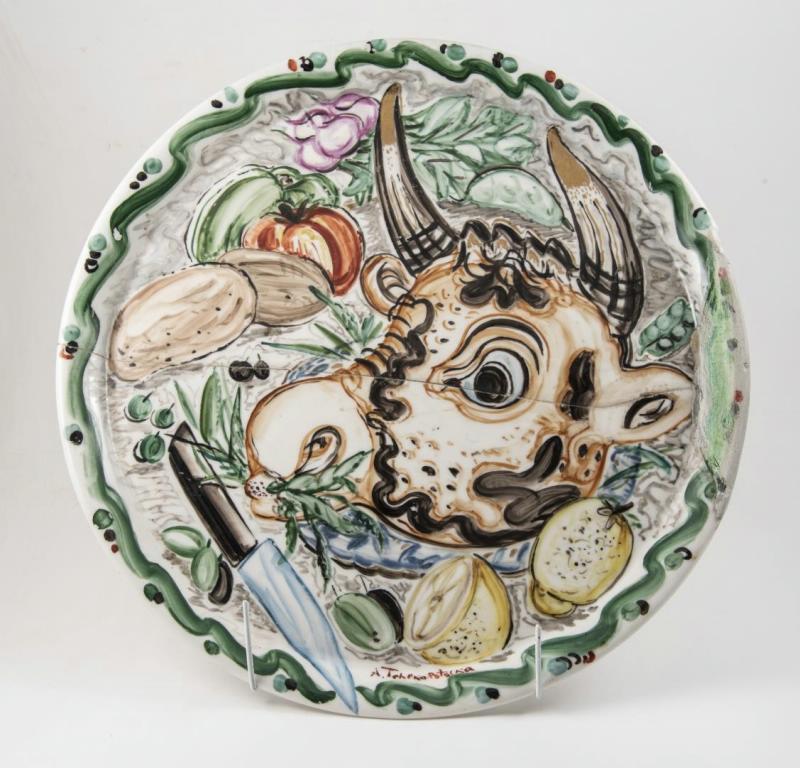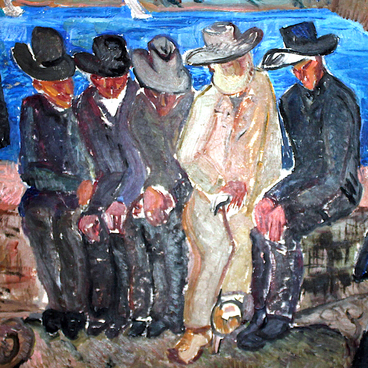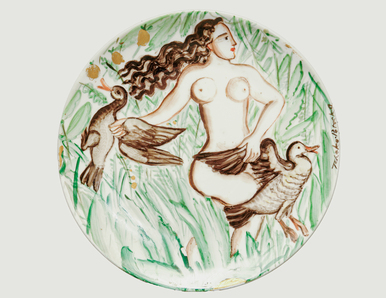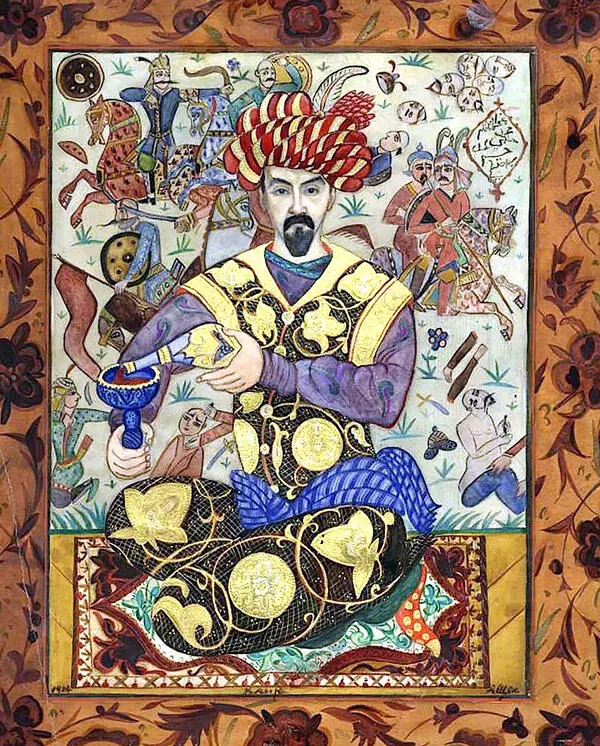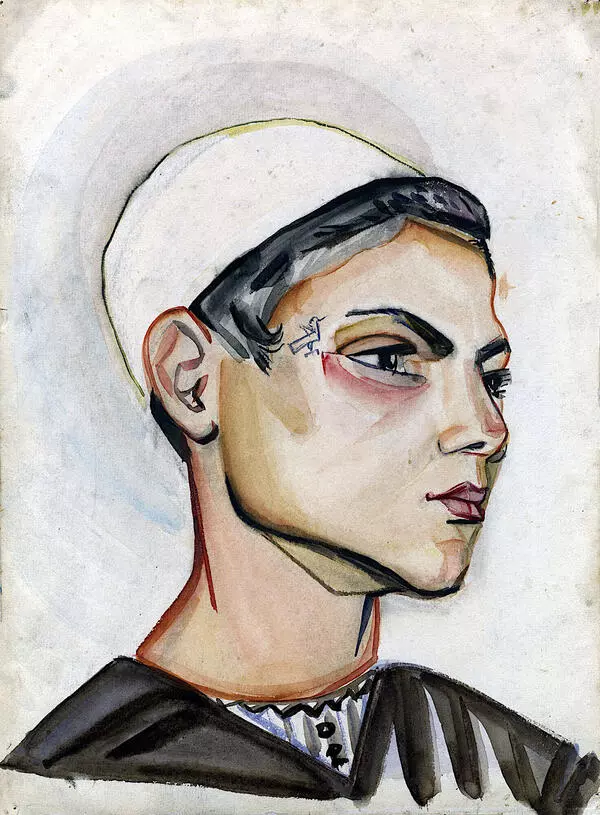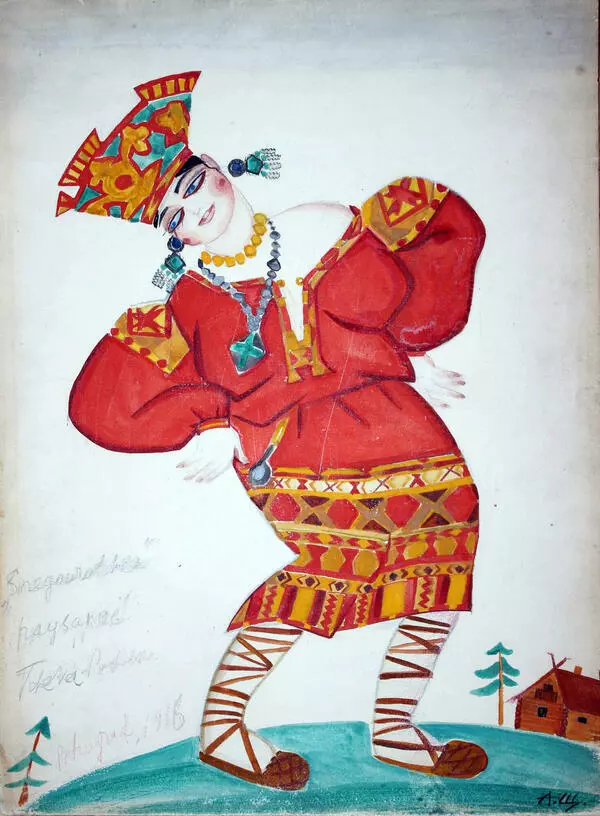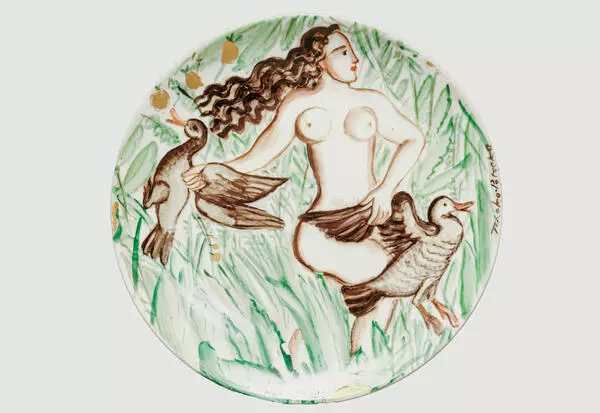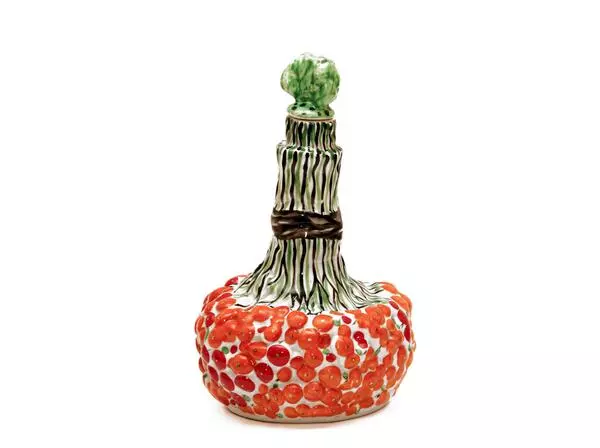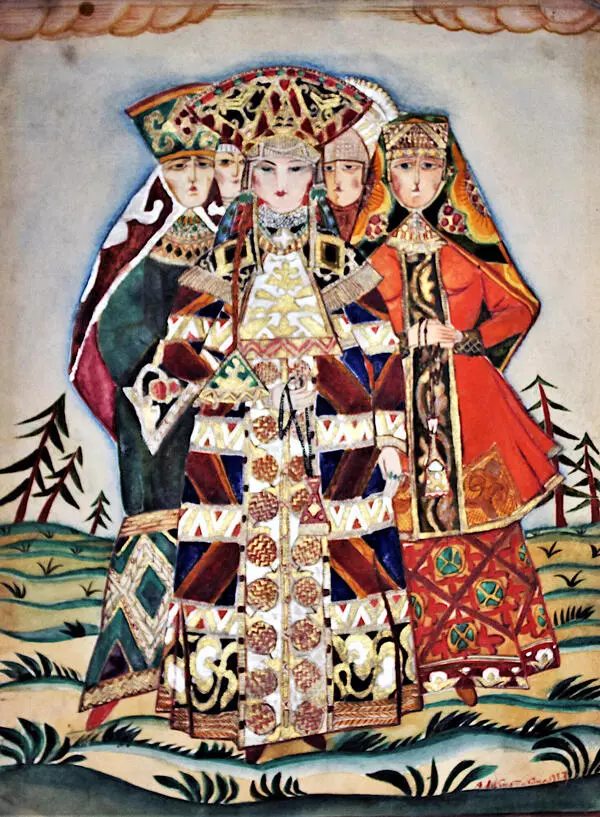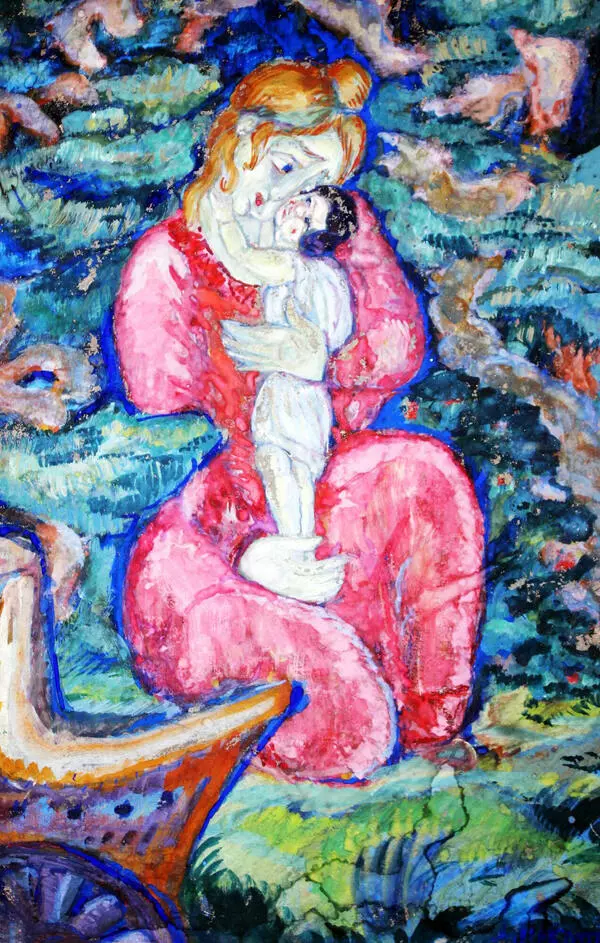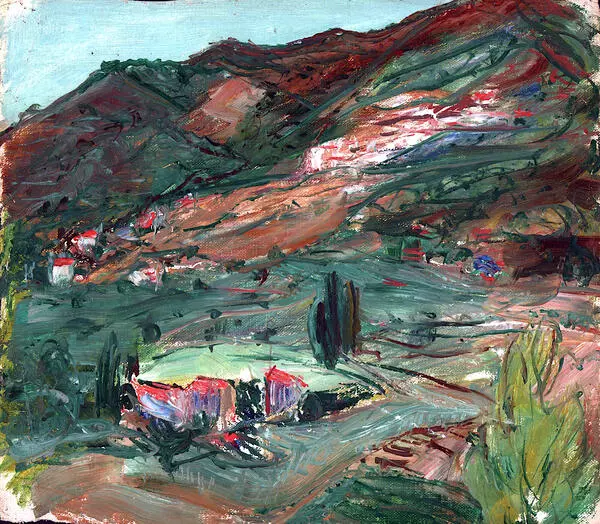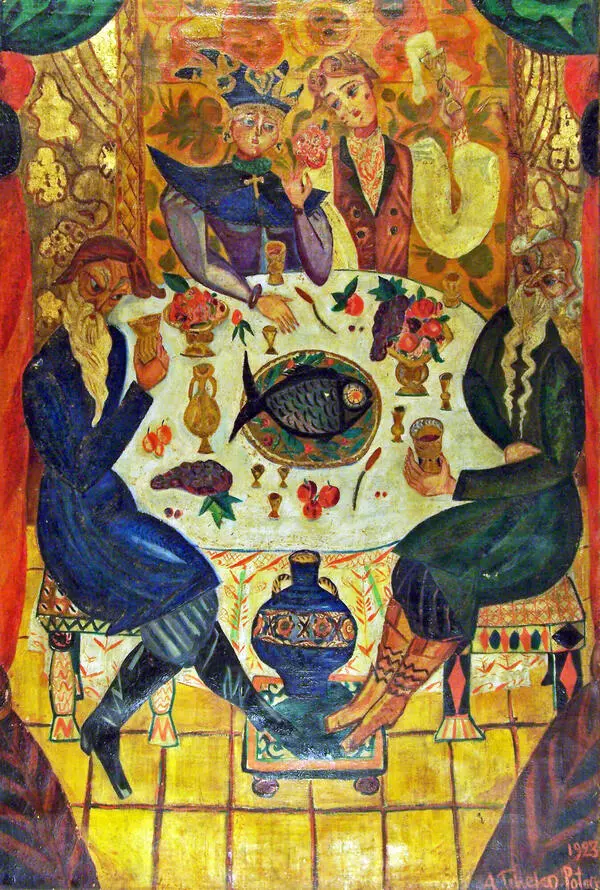In 1925, the Russian painter Ivan Yakovlevich Bilibin and his wife Alexandra Vasilievna Shchekatikhina-Pototskaya moved to Paris. The circumstances of their artistic fates differed. Bilibin was gaining popularity among compatriots who found themselves in a foreign land, but it was extremely difficult for him to find any contacts with modern French art. Shchekatikhina, on the contrary, successfully participated in Paris exhibitions.
In 1926, Shchekatikhina-Pototskaya organized a solo exhibition at the Druet Gallery and joined the Society of Independent Artists. Enthusiastic reviews of her works, especially of her porcelain works, appeared in the French press. Unlike many Russian artists who had been living abroad for many years, Shchekatikhina, although not assimilated, did not remain isolated. Following the internal logic of her own development as an artist, she perceived French artistic traditions through the real life of France.
Her search for a picturesque manner in the French period led to changes in her style of porcelain painting. The image is now included in the illusory environment organically connected with it: a bull’s head decorated with vegetables lies on the platter. It was inspired by a real image — the design of the windows of Parisian butcher shops. Obviously, everything here is based on understatements. Without turning the image into an ornament, by flattening the volumes, and by introducing graphic contours into the pictorial space, the artist binds it to the surface. That is when Alexandra Vasilievna reaches a certain monumentality. The painting does not crumble in a kaleidoscopic game, but concentrates around the main motif. Shchekatikhina’s compositions gained greater balance, but remained internally dramatic. The artist does not see an idyllic picture in nature and animals: there is a tension and a sense of struggle everywhere.
The central place on the dish is occupied by the animal’s image with fruits and berries arranged around it. Traditionally, a still life features dead animals, fish or birds. Here, the opposite is true: the character seems to be a living participant in the unfolding action. The composition is circular, as always easy and dynamic, it is dominated by the subject that concentrates on the main motif — the animal’s head.
In 1926, Shchekatikhina-Pototskaya organized a solo exhibition at the Druet Gallery and joined the Society of Independent Artists. Enthusiastic reviews of her works, especially of her porcelain works, appeared in the French press. Unlike many Russian artists who had been living abroad for many years, Shchekatikhina, although not assimilated, did not remain isolated. Following the internal logic of her own development as an artist, she perceived French artistic traditions through the real life of France.
Her search for a picturesque manner in the French period led to changes in her style of porcelain painting. The image is now included in the illusory environment organically connected with it: a bull’s head decorated with vegetables lies on the platter. It was inspired by a real image — the design of the windows of Parisian butcher shops. Obviously, everything here is based on understatements. Without turning the image into an ornament, by flattening the volumes, and by introducing graphic contours into the pictorial space, the artist binds it to the surface. That is when Alexandra Vasilievna reaches a certain monumentality. The painting does not crumble in a kaleidoscopic game, but concentrates around the main motif. Shchekatikhina’s compositions gained greater balance, but remained internally dramatic. The artist does not see an idyllic picture in nature and animals: there is a tension and a sense of struggle everywhere.
The central place on the dish is occupied by the animal’s image with fruits and berries arranged around it. Traditionally, a still life features dead animals, fish or birds. Here, the opposite is true: the character seems to be a living participant in the unfolding action. The composition is circular, as always easy and dynamic, it is dominated by the subject that concentrates on the main motif — the animal’s head.

